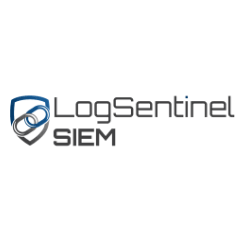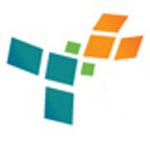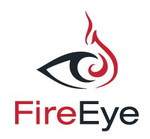Yes, Siem Software can be accessed from different devices and platforms. This software is designed to work with a variety of operating systems, including Windows, Mac, and Linux. It can also be viewed via web browsers, making it available on a variety of platforms, including desktop computers, laptops, tablets, and smartphones. This flexibility enables users to monitor and handle security information from any location, resulting in convenience and ease of use.
List of Best Siem Software
Forcepoint DLP, an advanced data loss prevention solution that boasts 100% accurate fingerprinting detection. Its intuitive interface makes configuration and navigation a breeze. With top-notch incident and web-threat management capabilities, along w...Read More Forcepoint DLP
Exabeam Security Management is an online Siem Software designed for Enterprises, SMEs, and StartUps. This comprehensive platform encompasses all aspects of security management, including Behavioral Analytics, Compliance Reporting, and Log Management,...Read More Exabeam Security Management
LogSentinel SIEM is a Security Information and Event Management solution crafted for businesses of every size. With LogSentinel SIEM, companies can finally have full control over their security, eliminating any vulnerability and drastically reducing...Read More LogSentinel SIEM
the SOC Prime Threat Detection Marketplace - an advanced SaaS platform designed for cybersecurity experts. Our all-in-one community is built to seamlessly integrate a variety of security tools, enabling users to efficiently identify and mitigate pote...Read More SOC Prime Threat Detection Marketplace
LogRhythm Enterprise is security solution that detects, investigates, and eliminates threats for organizations of all sizes. It incorporates advanced analytics and streamlined incident response to ensure compliance and efficient management of securit...Read More LogRhythm Enterprise
CorreLog Solution Suite, the industry-leading SIEM solution now part of BMC. Our powerful software is specifically designed to provide advanced security monitoring and compliance for both mainframe and distributed systems. Seamlessly integrate our pl...Read More CorreLog Solution Suite
FortiSIEM is solution that integrates advanced IT and OT security analysis capabilities with artificial intelligence-driven functionalities. It is designed to deliver scalable protection for todays enterprises and managed security service providers...Read More FortiSIEM
Snare is a tool for streamlining tasks and increasing productivity. Its intuitive interface and advanced features make even complex processes a breeze. Bid farewell to tedious workflows and embrace efficiency and simplicity with Snare. Experience the...Read More Snare
RSA NetWitness - a cybersecurity software that revolutionizes threat detection and response. Equipped with cutting-edge analytics and complete visibility, it empowers enterprises to proactively mitigate risks, surpassing industry standards for proact...Read More RSA NetWitness
HelpSystems is a digital signature software that simplifies the process of collecting electronic signatures. Compatible with Windows-enabled signature pads, tablet PCs, and mobile apps, this solution empowers businesses to efficiently sign all types...Read More HelpSystems
EventTrackeris a cybersecurity software that ensures organizations have continuous threat detection, response, and compliance. This cutting-edge solution offers real-time monitoring and expert analysis, providing reliable protection against all types...Read More EventTracker
Sumo Logic is a top APM monitoring solution that offers real-time monitoring for app and log metrics. It excels in providing visibility for hybrid SaaS environments, cloud infrastructure, and code audits, making it a leader in application monitoring...Read More Sumo Logic
ManageEngine Log360 is a log management system providing a comprehensive solution for real-time log collection, analysis, correlation, and archival. Its advanced features not only facilitate efficient log management but also safeguard confidential da...Read More ManageEngine Log360
Logz.io is cloud-based platform that caters to the monitoring needs of modern applications. Utilizing state-of-the-art artificial intelligence, it enables engineers to proactively identify and resolve critical issues, ensuring top-notch performance,...Read More Logz.io
Splunk Light - an advanced log management tool that can be easily downloaded and set up for free. With its comprehensive features, such as data collection, indexing, monitoring, reporting, and alerting, Splunk Light is the preferred solution for anal...Read More Splunk Light
AlienVault USM - the leading security management software trusted by businesses worldwide. With its unified platform, real-time monitoring, auto-alerts, and comprehensive reporting, it offers unmatched threat detection, incident response, and complia...Read More AlienVault USM
FireEye is an advanced cybersecurity solution known for its unparalleled threat detection and response capabilities. Utilizing cutting-edge technology, it provides top-of-the-line protection against even the most sophisticated cyber threats, revoluti...Read More FireEye
Graylogic CRM solution for facilitating and enhancing your customer relationships. Our vast knowledge and experience in CRM enables us to provide an all-inclusive range of services, including lead management, customer interaction planning, and compre...Read More Graylogic CRM
Learn More About Siem Software
- What Is Siem Software?
- What Are The Recent Trends In Siem Software?
- Benefits Of Using Siem Software
- Important Factors To Consider While Purchasing Siem Software?
- What Are The Key Features To Look For In Siem Software?
- Why Do Businesses Need Siem Software?
- How Much Time Is Required To Implement Siem Software?
- What Is The Level Of Customization Available In Siem Software?
- Which Industries Can Benefit The Most From Siem Software?
- Conclusion
What Is Siem Software?
Siem software, also known as Security Information and Event Management software, is a powerful solution that enables enterprises to centralize and analyze security data from several sources in real time. Its major goal is to detect and respond to cyber attacks. At its core, Siem software collects and analyzes data from a variety of sources, including firewalls, network devices, servers, and apps, to identify potential security incidents.
This not only aids in detecting and blocking assaults before they cause harm, but it also gives vital information about the organization's security posture. One of the primary advantages of Siem software is its capacity to generate alerts and reports based on examined data, allowing security teams to respond quickly in the event of a security incident. This functionality also helps to meet regulatory obligations by giving thorough information on security events.
Furthermore, Siem software includes features such as user activity monitoring, threat intelligence, and incident response orchestration, making it a comprehensive solution for all security requirements. It also interfaces with other security tools and platforms, transforming it into a centralized management platform for security operations.
When purchasing Siem software, consider its scalability, ease of use, and compatibility with existing systems. In addition, the pricing and degree of assistance supplied by the vendor should be assessed to enable a smooth implementation and continuous maintenance.
What Are The Recent Trends In Siem Software?
SIEM (Security Information and Event Management) software has evolved dramatically in recent years, owing to the increased demand for innovative and comprehensive cybersecurity solutions. These systems combine the features of SIM (Security Information Management) and SEM (Security Event Management) to provide real-time visibility into an organization's security posture while also detecting and responding to possible threats.
One of the most significant changes in SIEM software is the shift to cloud-based solutions. Traditional on-premises SIEM deployments have become less viable as remote work and cloud services have grown in popularity. Cloud-based SIEM systems provide the flexibility and scalability required to keep up with today's changing threat landscape, making them a popular choice for enterprises of all sizes.
Another trend in SIEM software is the incorporation of AI and machine learning (ML) capabilities. These technologies allow SIEM systems to examine huge and complicated datasets, recognize trends, and spot abnormalities that may signal a security issue. SIEM solutions that use AI and machine learning can deliver more accurate and quick threat detection and response, lowering the burden on human analysts and assisting enterprises in staying ahead of cyber threats.
In addition, user and entity behavior analytics (UEBA) are becoming increasingly important in SIEM software. This strategy employs advanced analytics and algorithms to monitor and analyze user behavior, as well as network and system activities, in order to detect any unusual or suspicious patterns. UEBA can detect insider threats, compromised accounts, and other cyber attacks that standard rule-based SIEM systems may miss.
Ransomware assaults are becoming increasingly common in today's security landscape, and SIEM software is changing to meet them. Some SIEM solutions now include ransomware-specific detection and response features, such as file integrity monitoring and sandboxing. These features can aid organizations in mitigating the effects of a ransomware attack and preventing additional damage.
Finally, the consolidation trend in the cybersecurity market has an impact on the SIEM space. Many SIEM companies are expanding their product offerings to include new security technologies like endpoint detection and response (EDR) and vulnerability management. This unification enables enterprises to streamline and manage their security solutions from a single platform, thereby increasing productivity and lowering costs.
Benefits Of Using Siem Software
In today's digital landscape, cyber attacks and data breaches pose a significant threat to businesses of all kinds. As a result, firms must have strong cybersecurity safeguards in place to secure critical data and systems. This is when SIEM software comes into play. SIEM software has numerous benefits that can significantly improve an organization's security posture and reduce cyber risks.
Let's explore, we'll go over the primary benefits of adopting SIEM software and how it may help your organization's cybersecurity efforts.
1. Improved Threat Detection And Response: One of the most significant advantages of SIEM software is its capacity to detect and respond to possible threats in real time. SIEM software can detect unusual activity and patterns that may suggest a cyber assault by collecting and correlating data from numerous sources, including firewalls, intrusion detection systems, and servers. This enables firms to respond quickly and proactively to potential risks, preventing them from causing substantial damage.
2. Full Log Management: SIEM software provides full log management features, allowing enterprises to more easily track and monitor network activities. It collects and maintains logs from many sources to provide a comprehensive overview of all network operations. This not only assists firms in identifying and investigating suspicious situations, but it also facilitates compliance with numerous regulatory obligations.
3. Centralized Platform For Security Monitoring: SIEM software serves as a centralized platform for security monitoring, enabling enterprises to gain a comprehensive understanding of their security posture. It combines data from numerous security tools and devices to provide a unified view of all security-related activity. This makes it easier for security teams to detect and evaluate trends, patterns, and anomalies, allowing them to make more informed decisions and respond more effectively to possible attacks.
4. Increased Efficiency And Resource Optimization: SIEM software allows firms to save time and costs by automating a variety of security-related operations. It can automatically triage and prioritize issues, easing the strain on security staff and allowing them to focus on more important activities. Furthermore, SIEM software can assist optimize resources by finding redundant or superfluous security controls, closing potential security vulnerabilities, and lowering the overall cost of security administration.
5. Compliance And Regulatory Standards: SIEM software is extremely useful for firms that must comply with stringent regulatory standards such as HIPAA, PCI DSS, and GDPR. SIEM software may provide extensive reports and audits by collecting and storing logs from several sources, demonstrating compliance with various regulatory standards. This not only helps firms avoid penalties and fines, but it also ensures that sensitive data is adequately protected.
Important Factors To Consider While Purchasing Siem Software?
When selecting Siem software, consumers should examine a number of critical considerations. Siem software (Security Information and Event Management) is a critical tool for businesses trying to better cybersecurity and safeguard their data from potential attackers.
Let's explore, we'll go over the most important elements to consider when researching Siem software alternatives.
1. Scalability And Flexibility: The Siem software's scalability and flexibility should be considered initially. Your organization's security requirements will change as it grows. As a result, it is critical to find a Siem solution that can scale to suit your evolving requirements. Furthermore, the program must be adaptable enough to combine with your current IT infrastructure and future technologies.
2. Threat Detection And Response Capabilities: The main purpose of Siem software is to detect and respond to security threats. Therefore, it is critical to analyze the threat detection and response capabilities of the program before making a purchase. Look for features like real-time monitoring, automatic incident response, and advanced analytics to guarantee your company is well-protected from cyber attacks.
3. Cross-Platform Support: In today's digital landscape, businesses use a wide range of devices and platforms, including cloud-based solutions. It is critical to select a Siem solution that covers all relevant platforms for full threat detection and response. Consider solutions that provide cross-platform support for apps, databases, and virtual environments.
4. Integration Qith Third-Party Tools: Siem software should not be used as a standalone solution. It should be compatible with other security tools and platforms to provide a comprehensive picture of your organization's security. When considering Siem software, look for solutions that integrate seamlessly with firewalls, antivirus software, and other third-party programs.
5. Usability: Siem software can be complex, and its efficacy is dependent on appropriate implementation and use. As a result, it is critical to invest in an intuitive and user-friendly solution. The user interface should be simple, and the software should generate clear and detailed results for easy analysis.
6. Cost And ROI: The cost of Siem software varies greatly based on the features and functionalities included. While it may be tempting to go with a cheaper choice, it is critical to examine the return on investment (ROI) that the software may deliver. Look for capabilities that will save your organization time and money, such as automatic incident response and real-time threat monitoring.
7. Vendor Reputation And Support: Siem software is a substantial investment, so select a trustworthy vendor. Before making a selection, look into the vendor's reputation, read reviews, and get recommendations from other firms. Consider the vendor's level of customer assistance, as technical issues may emerge and must be addressed swiftly.
What Are The Key Features To Look For In Siem Software?
In terms of cybersecurity, each firm must remain ahead of potential risks. This is when SIEM software comes into play. SIEM software collects and analyzes security events and logs from a variety of sources, giving organizations real-time access into their security posture. However, with so many options on the market, it can be difficult to select the best SIEM tool for your business.
To make an informed decision, below are the essential features to look for in SIEM software:
1. Real-Time Monitoring And Alerting: One of the most important functions of SIEM software is real-time monitoring and notification. This means that the tool must continuously monitor and analyze incoming logs, events, and actions to detect potential security issues as they arise. It should also be capable of giving immediate alerts to security staff, allowing them to respond quickly to mitigate any hazards.
2. Log Management And Correlation: SIEM software should be able to gather, store, and manage log data from a variety of sources, including network devices, servers, and apps. It should also be able to link events from various sources in order to present a full picture of security incidents. This aids in recognizing trends of malicious activity and allows for faster response.
3. Advanced Analytics And Threat Detection: To detect abnormalities and suspicious activity, a successful SIEM product should have advanced analytics features like machine learning and user behavior analytics. Furthermore, it should include threat intelligence to analyze incoming data to known attack patterns and detect potential risks.
4. Compliance Management: Regulations like GDPR and HIPAA require firms to periodically monitor and audit their security systems. Look for a SIEM platform that includes compliance management capabilities like predefined compliance reports and automated workflows to help you stay in compliance.
5. User-Friendly Interface: SIEM software can be complex, therefore having a user-friendly interface is essential for efficient use. Look for a product with customized dashboards, real-time visuals, and simple search and filtering capabilities. This will allow security professionals to promptly detect and respond to any threats.
6. Scalability And Flexibility: As your organization expands, so will your network and security infrastructure. It is critical to select a SIEM product that is scalable and adaptable enough to manage an increasing number of log sources and events. This ensures that the solution can keep pace with your organization's changing security requirements.
7. Integrations: SIEM software should be able to work alongside other security solutions like intrusion detection systems, firewalls, and endpoint protection. This enables centralized management and increases the effectiveness of your security approach.
Why Do Businesses Need Siem Software?
Businesses today confront multiple cyber dangers that can lead to data breaches, financial loss, and brand reputation damage. As enterprises become more digitally linked, the requirement for a strong cybersecurity solution grows. Here is when SIEM software comes into play. SIEM, or Security Information and Event Management, is a software system that collects, analyzes, and correlates security data from several sources in real time.
It combines data from network devices, servers, apps, and users to give enterprises a comprehensive picture of the security posture of their IT infrastructure. The major reason firms require SIEM software is to improve their cybersecurity posture. With the ever-changing threat landscape, traditional security methods like firewalls and antivirus software are insufficient to protect enterprises from modern cyber attacks.
SIEM software, on the other hand, approaches cybersecurity in a proactive manner, detecting and responding to possible threats before they cause harm. Furthermore, SIEM software helps firms meet regulatory obligations. Many industries, including healthcare and banking, have stringent standards governing the safeguarding of sensitive information.
SIEM software enables real-time monitoring and reporting, which is critical for compliance audits. SIEM software also plays an important role in threat detection and response. SIEM software may detect trends and anomalies in security data from many sources, indicating a possible danger. This allows organizations to take proactive steps to prevent or mitigate attacks.
Another significant advantage of SIEM software is the ability to centralize security data. Instead of having several security solutions that generate different warnings and logs, SIEM software collects all of this information in one location. This allows firms to better manage and prioritize problems, decreasing the complexity and time necessary for incident response.
Furthermore, SIEM software enables enterprises to obtain greater visibility into their IT environments. Businesses can find vulnerabilities, misconfigurations, and other security problems that would otherwise go undetected by collecting and analysing security data. This allows them to take corrective action before being exploited by cybercriminals.
How Much Time Is Required To Implement Siem Software?
The time taken to adopt Siem Software varies based on a number of factors, including the software's complexity, the size of the company, and the level of customization necessary. However, on average, the implementation phase can last from a few weeks to several months. Before installing Siem Software, you must first conduct an in-depth examination of your organization's needs and existing systems.
It may take a few weeks to precisely assess the requirements and any impediments. The installation process itself might take anything from a few days to a few weeks, depending on the organization's size and complexity. This includes installing hardware, configuring software, and integrating it into existing systems. Once deployed, the program will need to be configured and customized to meet your organization's specific requirements and security regulations.
It may take several weeks to guarantee that the software is adapted to your organization's specific needs. Training and onboarding the software for the organization's IT team and end users is also an important part of the implementation process. It may take many weeks to guarantee that all necessary staff members are adept in using the software successfully. Finally, continual maintenance and monitoring of the Siem software is required to ensure that it functions properly and meets the organization's security requirements. This may necessitate a dedicated staff and could take several months to build.
What Is The Level Of Customization Available In Siem Software?
When choosing the best Siem software for your company, one key factor to consider is the level of customisation offered. This feature allows businesses to personalize the program to their specific security requirements and preferences. So, what level of customisation is available in Siem software? First and foremost, it is critical to understand that the level of customisation varies based on the Siem software you select.
Some may provide extensive customizing possibilities, but others may have more limited capabilities. This is why it's critical to investigate and compare many possibilities to pick the one that best meets your company's demands. That being said, most Siem software will include a reasonable level of customisation, allowing businesses to modify features and settings to their preference.
This can include developing custom dashboards and reports, configuring rules and alerts, and even integrating with third-party applications. Furthermore, some Siem software may allow organizations to add their own unique plugins or scripts to improve the software's functionality and suit special requirements. This is especially important for enterprises with specific security requirements or compliance rules.
Another factor to consider is the amount of user-level customization accessible in Siem software. Individual users can tailor their experience by configuring their own preferences and views, making it more usable and efficient. Overall, the level of customisation available in Siem software can have a significant impact on its effectiveness in meeting your company's security requirements. Before making a decision, you must first understand your organization's requirements and examine the software's customization options.
Which Industries Can Benefit The Most From Siem Software?
SIEM software, or Security Information and Event Management software, has become a critical tool for enterprises of all kinds to successfully manage their security operations. With an increasing number of cyber attacks and data breaches, organizations must invest in a strong SIEM solution to protect their sensitive data and avoid both financial and reputational harm. While SIEM software can assist a wide range of industries, a few stand out in terms of its capabilities and functionalities.
Let's explore, we'll look at the top industries that can benefit from SIEM software, as well as the most important factors to consider when selecting the best solution for your company.
1. Finance And Banking Industry: Because of the large amount of financial data held by these industries, they are a prime target for cybercriminals. SIEM software allows financial institutions to effectively monitor and analyze network and system records in order to detect suspicious activity and prevent fraudulent transactions. Additionally, SIEM software can assist these firms in meeting numerous regulatory requirements such as PCI DSS, GDPR, and SOX.
2. Healthcare Industry: The healthcare industry has a large amount of sensitive data, such as patient information and medical records, making it an appealing target for hackers. SIEM software can help healthcare facilities secure this data by tracking and monitoring user access to sensitive systems and detecting odd activity. It can also help identify and mitigate security flaws in network-connected medical equipment and apps.
3. Government And Public Industry: Government agencies and public sector enterprises handle a large amount of sensitive data that must be secured against cyber attacks. They must follow tight restrictions, and any security breaches might have serious implications. SIEM software can assist these firms in centralizing and correlating security event data, allowing for real-time threat detection and response while guaranteeing regulatory compliance.
4. Retail And Ecommerce Industry : The retail and eCommerce sector is continually evolving, with an increasing number of people choosing to purchase online. As the number of digital transactions increases, so does the potential of cyber attacks. SIEM software can assist retail and eCommerce organizations in safeguarding their customers' sensitive data by monitoring network traffic and detecting potential attacks. It also allows retailers to respond rapidly to security incidents, reducing possible damage.
5. Technology And IT organizations: Because technology and IT organizations frequently handle very sensitive and valuable data, they are a prime target for hackers. SIEM software can assist these firms in successfully monitoring and managing their large digital networks by detecting and responding to any security risks in real time. It can also help IT organizations identify and address security vulnerabilities in their system.
Conclusion
After conducting extensive study and analysis on numerous Siem software choices, it is evident that this technology is no longer a 'nice-to-have' for enterprises. With an increasing amount of cyber attacks and data breaches, any firm wishing to safeguard sensitive information must have a complete Siem solution. Throughout this buyer's guide, we've covered the important factors to consider while evaluating Siem software, such as features, pricing, and customer support.
It is critical to thoroughly consider your individual business requirements and prioritize the features that are most relevant to you. Furthermore, when selecting Siem software, it is critical to examine its ease of deployment and interaction with current systems. This will enable a smooth transition and minimize disruptions to your business operations. Finally, investing in Siem software ensures your organization's security and peace of mind.
With the proper solution in place, you can proactively monitor and mitigate threats, ensure regulatory compliance, and protect your important data. We hope that this buyer's guide has provided you with enough facts and insights to make an informed decision on the finest Siem software for your business. Remember to carefully consider and test many ideas before making a final selection. Thank you for using our information as a resource in your Siem software choices.
Siem Software FAQ's
Can Siem Software Be Accessed Across Multiple Devices And Platforms?
Is Siem Software Future-Proof And Adaptable To Emerging Technologies Like AI, Blockchain Or IoT?
Yes, Siem Software is future-proof and extremely adaptable to emerging technologies such as artificial intelligence, blockchain, and Internet of Things. It is constantly evolving and updating its capabilities to stay up with the ever-changing technological scene.
Its powerful analytics and automatic response skills enable it to handle the growing complexity and volume of data produced by these technologies. Furthermore, Siem Software is built to work smoothly with other tools and technologies, making it an ideal choice for enterprises wishing to utilize emerging technology.
Is There A Free Trial Offered To Assess Siem Software Before Committing?
Yes, many Siem software vendors provide a free trial time for consumers to evaluate the product before making a purchase. This allows potential users to test the Siem software's features and functionality to determine whether it suits their individual needs and requirements.
Free trials often last 14 to 30 days, allowing consumers to fully study the software and make an informed decision. Some suppliers even supply a free version of their Siem software with limited functionality for people who want to test before purchasing.
Does Siem Software Offer Data Security Features And Meet Regulatory Compliance Standards?
Yes, Siem Software provides comprehensive data security capabilities to protect sensitive information and meet regulatory compliance requirements. It detects and responds to potential security risks with advanced encryption algorithms, user authentication procedures, and real-time monitoring. Furthermore, it is intended to meet a variety of regulatory standards, including PCI DSS, HIPAA, and GDPR, providing enterprises with a comprehensive compliance solution.
Can Siem Software Integrate Seamlessly With Existing Tools And Platforms?
Yes, Siem software integrates smoothly with existing tools and platforms. It is designed to function with a wide range of operating systems, applications, and devices. Siem software's open architecture and flexible APIs allow it to readily integrate with a variety of security and IT solutions. This enables a centralized and streamlined approach to threat detection and response, making it more efficient and effective for enterprises.




















